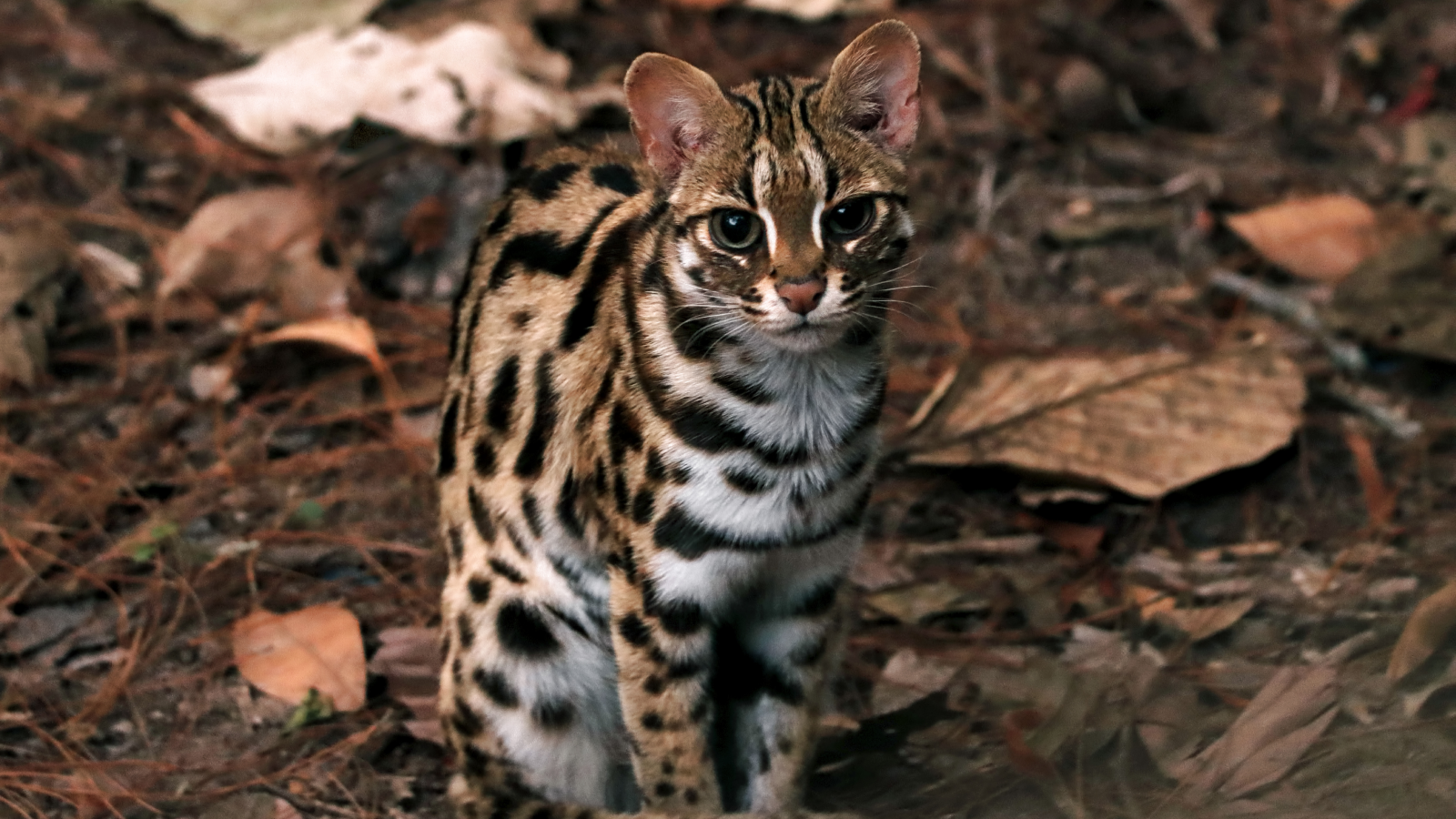People in China lived alongside 'chicken-killing tigers' long before domestic cats arrived
Leopard cats were living alongside people in ancient China for more than 3,500 years before domestic cats arrived from Europe via the Silk Road.

Humans were living alongside leopard cats in settlements in ancient China more than 3,500 years before domestic cats arrived, new research shows.
The findings reveal that people in the region had an enduring and complex relationship with such animals for thousands of years before domestic cats arrived with merchants along the Silk Road 1,400 years ago.
"Now, they [leopard cats] are our hidden neighbors, but thousands of years ago they lived in a closer relationship with people," study co-author Shu-Jin Luo, principal investigator at Peking University's School of Life Sciences in Beijing, China, told Live Science.
The work was published Thursday (Nov. 27) in the journal Cell Genomics.
Modern domestic cats (Felis catus), which are descended from African wildcats (Felis lybica), have adapted so successfully to living with humans that they are now found on every continent except for Antarctica.
Yet when and where they were originally domesticated is uncertain, with researchers previously suggesting the Levant 9,500 years ago and Egypt about 3,500 years ago. One of the main hypotheses is that they spread to Europe with Neolithic farmers about 2,500 years ago and then were eventually taken along the Silk Road through Eurasia into China.
However, in 2013, evidence of cats living alongside humans in western China thousands of years before that, in about 3300 B.C., came to light, casting doubt on that idea.
Get the world’s most fascinating discoveries delivered straight to your inbox.
In 2022, analysis of the cat DNA revealed that these ancient cats in China weren't domestic cats but were leopard cats (Prionailurus bengalensis), a small wild cat native to South, Southeast and East Asia.
Rather than clearing everything up, the result led to more questions: how long the leopard cats had lived alongside humans, when and how domestic cats reached China, and what drama played out when the domestic cats turned up and found that they weren't the only felid in town.
To find out more, researchers behind the new study used radiocarbon dating and DNA sequencing of nuclear and mitochondrial genomes from samples of 22 ancient felid bones, which were unearthed in 14 archaeological sites across China dating from about 3500 B.C. to A.D. 1800. The scientists then compared their results with previously published ancient and modern cat genomes from around the world.
Of the 22 individuals, 14, dated to between about A.D. 730 and 1800, were domestic cats. The earliest domestic cat was excavated from Tongwan City, a key hub along the Silk Road in western China. Previous research identified another domestic cat farther west along the Silk Road in Kazakhstan, dated to between A.D. 775 and 940.
The earliest known depictions of domestic cats in China are painted motifs in two tombs in central China dating to about A.D. 820 and 830, and there is also a written account from about the same time of the empress presenting a pet cat to her ministers.
These records hint that domestic cats arrived in China via the Silk Road relatively recently, in about A.D. 700, and as a recent introduction were thought of as exotic pets and likely kept among the ancient Chinese elite, Luo told Live Science. The cats were often white, which was considered a sacred color in animals, she said.
All the earlier remains belonged to leopard cats, dating from between about 5,400 years ago to approximately A.D. 150.

When the researchers studied the cats, they realized that the close relationship between humans and leopard cats was not a transient and occasional thing but instead a shared history lasting for over 3,500 years, Luo said.
She added that leopard cats in ancient China may have once occupied a similar niche to domestic cats, entering a commensal relationship with humans by preying on small rodents in villages and fields.
"I think in ancient times, people would keep the cub and try to raise it so they can catch rodents. I don't think it's ever been fully domesticated, but it was definitely a more intimate relationship than with today's leopard cat," Luo said.
Eva-Maria Geigl, a paleogeneticist at the Jacques Monod Institute of the French National Centre for Scientific Research (CNRS) who wasn't involved in the study, told Live Science the findings reflect the domestication process of cats around the Mediterranean. "It's a commensal relationship, taking advantage of the human niche and this was very welcomed by the Neolithic farmers as they really had to struggle with the rodents and with venomous animals," she told Live Science. "Such cats were not domesticated in the sense as we see it now — these couch potatoes — they were real wild cats still."
Records compiled between the fifth and third centuries B.C in China provide further evidence of this relationship, Luo said, indicating that people welcomed wild cats on their farms for pest control. This means leopard cats may have had a relationship with humans that lasted approximately 3,500 years, she said.
However, this relationship eventually ended, and there is a nearly 600-year gap between the last uncovered leopard cats and the earliest appearance of domestic cats in China.
Luo said this lack of cats coincides with the Period of Division (A.D. 220 to 589) after the collapse of the Han dynasty and before the rise of the Tang dynasty. It was a time of war and colder, drier conditions with declining agricultural yields, social unrest and a shrinking population. A similar temporary population decline was seen in black rats (Rattus rattus) in Europe after the fall of the Roman Empire.
This means the leopard cats likely lost their hunting grounds, Luo said. When the Tang dynasty was established in A.D. 618, and agriculture and the human population rebounded, the leopard cats were no longer so welcome, because of the rise of keeping chickens.
Leopard cats still have a bad reputation for killing chickens, she said, so the cats would have become unwelcome animals. In southern parts of China, the leopard cat has the nickname the "chicken-killing tiger," Luo said.
Domestic cats took their place because they are cute, tame and generally catch smaller prey like mice and rats, not chickens, Luo suggested.
Geigl said the crucial shift that led domestic cats to gain widespread acceptance probably came in Egypt in the first millennium B.C., when people bred cats in temples and fed many cats together, and a genetic mutation led to behavioral change. "This is not normal behavior for a cat. A cat is a territorial solitary animal, just the opposite of what the Egyptians had," she noted.
Cat quiz: Can you get a purr-fect score?

Chris Simms is a freelance journalist who previously worked at New Scientist for more than 10 years, in roles including chief subeditor and assistant news editor. He was also a senior subeditor at Nature and has a degree in zoology from Queen Mary University of London. In recent years, he has written numerous articles for New Scientist and in 2018 was shortlisted for Best Newcomer at the Association of British Science Writers awards.
You must confirm your public display name before commenting
Please logout and then login again, you will then be prompted to enter your display name.
